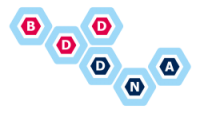BDD Implementation in Java
Java has robust support for BDD through frameworks like Cucumber and JBehave. Cucumber enables writing executable specifications using Gherkin syntax, while JBehave provides a more Java-centric approach. These frameworks integrate with popular testing libraries like JUnit and provide annotations and hooks for writing BDD scenarios and step definitions. You can demonstrate the use of Cucumber in Java by showcasing a sample project and explaining how to write feature files and corresponding step definitions.
BDD Implementation in C#
C# developers can leverage tools like SpecFlow and NSpec for implementing BDD. SpecFlow is a widely used BDD framework that integrates with popular testing frameworks such as NUnit and xUnit. It allows writing feature files in Gherkin syntax and mapping them to step definitions in C#. NSpec is another option that provides a fluent syntax for defining BDD specifications directly in C#. You can demonstrate the use of SpecFlow or NSpec in C# by providing code examples that illustrate the process of writing feature files and executing BDD tests.
BDD Implementation in Python
Python developers can benefit from frameworks like Behave and Lettuce for implementing BDD. Behave is a widely adopted BDD framework that uses Gherkin syntax for writing feature files and integrates seamlessly with popular testing frameworks like Pytest and Nose. Lettuce is another popular choice that provides a more lightweight approach to BDD. You can demonstrate the use of Behave in Python by explaining the setup process, showcasing feature files, and illustrating how step definitions are written and executed.
BDD Implementation in Ruby
Ruby has a strong BDD ecosystem with tools like Cucumber and RSpec. Cucumber is widely used for BDD in Ruby and allows writing feature files in Gherkin syntax. It integrates with RSpec, a popular testing framework, for writing step definitions. RSpec itself provides a rich DSL for defining BDD-style tests directly in Ruby. You can demonstrate the use of Cucumber and RSpec in Ruby by presenting a sample project, illustrating the structure of feature files and step definitions, and showcasing how tests are executed.
Conclusion
Behaviour-Driven Development can be applied in various programming languages, allowing teams to achieve a shared understanding of software behaviour and deliver high-quality solutions. Java, C#, Python, and Ruby are just a few examples of languages with strong BDD support through frameworks like Cucumber, SpecFlow, Behave, and RSpec. By leveraging these language-specific tools and frameworks, developers can write executable specifications, create expressive scenarios, and validate the expected behaviour of their software. Remember to explore the documentation and community resources available for each framework to delve deeper into their implementation details and best practices.
By adopting BDD in different programming languages, development teams can enhance collaboration, improve test coverage, and deliver software that aligns with stakeholder expectations. So, whether you’re building applications in Java, C#, Python, Ruby, or any other language, BDD can be a valuable methodology to ensure the success of your software projects.


